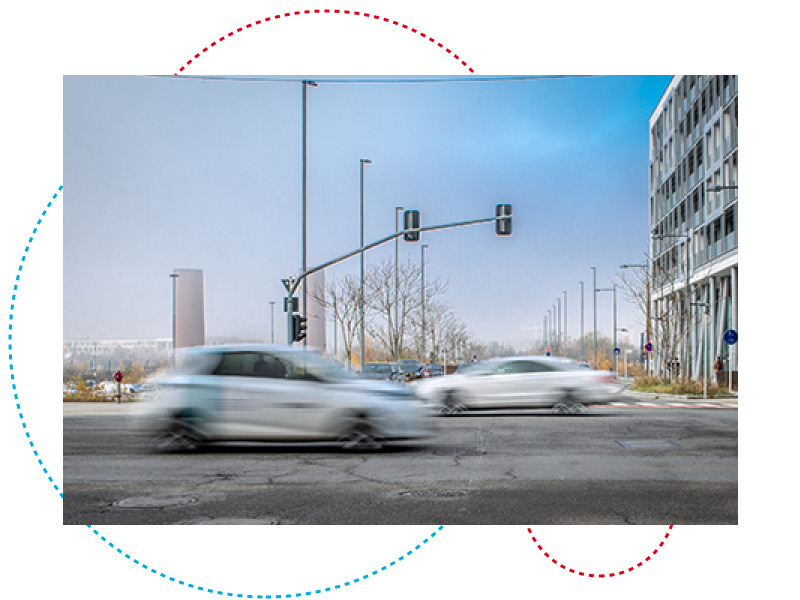It has happened to all of us: at midnight on New Year’s Eve we pick up our mobile phones and try to call or write our loved ones. And then, nothing. The network is too crowded and we start the New Year offline. While the consequences of an overcrowded network can be irksome, the stakes are about to rise significantly as automotive companies develop increasingly connected cars. This is why researchers at SnT are taking part in two multimillion-euro EU projects to help bring 5G – the next generation of mobile connectivity – to our roads.
Luxembourg driving progress in 5G
Prof. Thomas Engel, expert in vehicular communication and multimodal traffic management, and his team will work with over 50 partners within the H2020 5G-MOBIX and 5G-DRIVE projects. These will test how the 5G network can support connected car use cases by performing trials on 5G corridors across the EU, China, and Korea.
The work comes as part of a wider effort to position Luxembourg among the pioneers of 5G, involving POST Luxembourg, SEC Consult, the Luxembourg Institute of Science and Technology (LIST), the Ministry of the Economy and the Ministry of Sustainable Development and Infrastructure.

The future of mobility
Connected cars promise to be safer, to reduce traffic, and to be more fuel-efficient. They’ll do this by communicating constantly with one another and their environments, sending messages warning of slowdowns or of wayward pedestrians, informing one another of the need to form a rescue lane on the highway, or moving in coordinated platoons to reduce wind resistance and improve fuel efficiency. But the foundation of all this communication needs to be more robust and dependable than the networks we live with today. Connected cars need to communicate without delays, without dropped messages, and without service holes. Otherwise, precisely the most important information—of a traffic jam in a big city or an accident ahead on a remote country road—might not get through.
Why 5G?
This is why automated cars need 5G, and Prof. Engel and his team are laying the foundations for just that. Dr. Ion Turcanu explains: “Automated cars will need to use a heterogeneous network to communicate with each other.” This means that the car will switch between different communication methods according to current conditions, such as their speed, location and the weather. For example, in a remote region this might mean communicating via satellite, while in dense urban traffic, Bluetooth or a modified form of short-range WiFi might be more appropriate. This ability to switch seamlessly between communication technologies will ensure that important messages arrive in real-time and that no information gets dropped. Dr. Ridha Soua, expert in communication within the Internet of Things, confirms: “Designing resilient and secure handover solutions able to provide seamless connectivity with low and predictable latency for cooperative connected vehicles is very crucial.”
International standardisation
On top of considering the many small details that will make this heterogeneous 5G system a reality, Prof. Engel’s team is also looking at the big picture. They are working with their partners to develop standards for both Europe and China, which will ensure that products made for one market can easily be imported to the other, simplifying trade and travel in an ever-shrinking world.

SnT is turning 10! We’ve come a long way since launching our activities in 2009. Stay tuned for a year full of celebrations, cutting-edge research, and new milestones.
OVER 40 INDUSTRY PARTNERS | MORE THAN 70 EUROPEAN PROJECTS | 103 GRADUATED PHDS | 4 SPIN-OFFS
For SnT’s researchers, laying the groundwork for the deployment of 5G for transport is just the start. The team are already developing requirements that not only meet the already obvious needs of connected cars but also anticipate possible future needs. Watch this space for further innovation in the field of 5G-enabled communications.
For more information: https://secan-lab.uni.lu/projects/eu-projects
Read more 5G-Drive here
